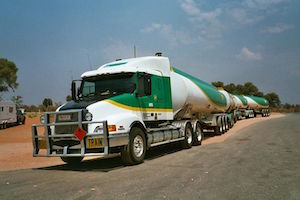Working out the Angles

A gazillion people out there refuse to learn math after a certain age. Just absolutely refuse. In my experience, many of them frequently refuse math as much as possible. I can't say I get this, but enough people do it that, well, it's definitely a thing.
This causes a lot of problems for those of us who don't mind math—especially when we need to explain a concept that relies on that math.
As an example, let's look at describing ramp angles. Specifically, why do ramps have particular angles?
First off, we’ll choose the type of ramp. Wheelchair ramps, for instance, have an allowed ratio of 1:12. This means it's allowed to increase one inch in height for every 12 inches in length, which means about 3.58 degrees.
By comparison, the steepest road in the world has a 19-degree slope, a 35% grade (using the US system for determining road slopes). We figure this using a pretty simple equation called “rise over run.” (You just divide the rise, or the increase in height, by the run, or distance, then multiply it by 100. We're failing in our effort to avoid math, though.)
Why is the angle so much lower on wheelchair ramps? Well, we need to delve into some more math—in this case, the basic principle behind ramps:
Lifting an object always takes the same amount of work, no matter what method is used. An elevator works just as hard as you do to lift something; it's just capable of lifting more. A ramp lets you spread that work out over more time. You're still working hard, just not all at once.
 So, the reason wheelchair ramps have such an angle is to minimize the work necessary for someone to get into a building. Many yard and loading ramps have steeper angles because we often have more limited room to fit the ramp, and we’re willing to make our workers do a bit more to earn their pay. (I understand that Jeff Mann, “The” Yard Ramp Guy, has chosen to explore his own ramp angle related to mine in his blog this week. Bully for you, Jeff, and don’t hurt yourself.)
So, the reason wheelchair ramps have such an angle is to minimize the work necessary for someone to get into a building. Many yard and loading ramps have steeper angles because we often have more limited room to fit the ramp, and we’re willing to make our workers do a bit more to earn their pay. (I understand that Jeff Mann, “The” Yard Ramp Guy, has chosen to explore his own ramp angle related to mine in his blog this week. Bully for you, Jeff, and don’t hurt yourself.)
Take a look at how I described road grade and wheelchair ramps, and then see how I described the general principle behind ramps. One has more numbers than the other, but both contain essentially the exact same amount of math. I simply used words to describe it more heavily in the latter and provided examples in the former.
This really leads me to believe the problem isn't with math itself, but the way we learn it in schools. Using more real-world problems instead of pure math might really help make it more interesting. That, and actually providing the schools with enough support to do their jobs.
_________
Quotable
Top this, other Yard Ramp Guy:
“There has always been a tendency to classify children almost as a distinct species.”
— Hugh Lofting





 Despite the lack of city permissions, Don Justo hasn't had to deal with any real trouble from the city. Most residents are quite proud of it, though a small number consider it an eyesore.
Despite the lack of city permissions, Don Justo hasn't had to deal with any real trouble from the city. Most residents are quite proud of it, though a small number consider it an eyesore.